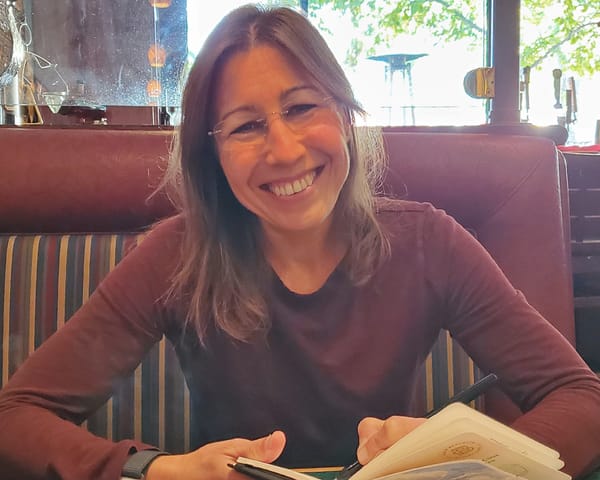Thought experiments ≠ commitments
Thinking about something doesn’t make it so. Here’s why that can be a very good thing and how to tap into the power of brainstorming without all the storming.

Do you ever catch yourself exploring an idea when suddenly your no-pressure thought experiment insidiously morphs into feeling like a full-scale life commitment?
Nothing has changed. You were just thinking. Trying on ideas. Evaluating options.
Your thoughts didn’t magically alter your status. You committed to nothing. You’re still the same person in the same place at roughly the same time, but somehow, your brain began shifting the mental process of brainstorming into just storming.
What happened there?
If you tend to dabble in worst-case-scenario-type thinking, you run the risk of triggering your fear response when engaging in harmless thought exercises. Do this often enough, and your brain becomes hardwired to limit your thinking when exploring different outcomes, causing unnecessary suffering and eroding your openness to explore ideas more broadly.
Luckily, we have the power to shape how we think, and this is where mindfulness can help us tap into the true potential of cognitive riffing.
Make it so.

The bad news is that merely thinking about something doesn’t make it so. Granted, it would be awesome (and highly caloric) if we could just think a yummy slice of cheesecake into existence (oh, and also our biggest life goals), but most meaningful changes require some form of action, so, unless we put in the work, we’re not likely to experience a change in outcomes.
The good news, however, is that merely thinking about something doesn’t make it so.
(That’s not a typo.)
The wonderful flipside of our thoughts not automatically transforming into reality is that we can allow ourselves to think of many outcomes and try on a variety of new ideas before acting on them. Exploring new ideas and mentally engaging with potential outcomes before moving forward is an essential part of navigating the many directions (and decisions) life has to offer.
We can’t go back in time and undo past decisions, but we can leverage brainstorming and creative ideation to help us determine which outcomes we’d like to avoid or pursue.
Cognitive riffing allows us to feel safe with the improvisational nature of thoughts, empowering us to expand our thinking by removing judgement. There are no mistakes in brainstorming.
Examine your ideas with detached curiosity.
Brainstorming with detached curiosity can help us remain mindful that thinking about options is very different than acting on decisions. Remembering our thoughts are harmless can help us feel comfortable engaging in cognitive riffing and exploring a variety of alternatives outside our immediate comfort zone.
The better you become at detaching yourself from your ideas and looking at them with curiosity of a neutral, outside observer with no skin in the game, the more possibilities you can explore. There is nothing to lose.
Explore what could go right.
Next time you catch yourself shutting down creative ideation with all the ways something could go wrong, try asking yourself what could go right.
It can be challenging to engage in thoughts which lie outside of your normal mental movie reel, but remembering to make room for all the ways you could be pleasantly surprised about something can help you approach decisions from a different perspective which welcomes more positive outcomes.
Afterthoughts: I could write more on the importance of positive thinking but there is already plenty about this out there (and written by much smarter people). If you’d like to explore more on positivity and positivity, I highly recommend the book, The Art of Possibility: Transforming Professional and Personal Life by Rosamund Stone Zander and Benjamin Zander.




